Want to give your home decor some life? Decorative pottery can help. With an array of vibrant designs, you can create an inviting atmosphere. Let’s explore the different types of decorative pottery and discover how to use it to spruce up any space!
Table of Contents
What is decorative pottery?
Decorative pottery is clay with designs or decorations. These can be added when the clay is pliable or fired. Techniques for decoration include painting, carving, stamping, and etching.
One form is slipware. It involves adding liquid clay, or “slip,” to the pottery. Then, a tool or brush is used to create patterns or designs. Another is sgraffito, which is scratching images into the clay before firing.
Decorative pottery can be functional or aesthetic. It can be used as everyday dishware or on special occasions. It’s also admired as beautiful craftwork.
What are the three types of pottery?
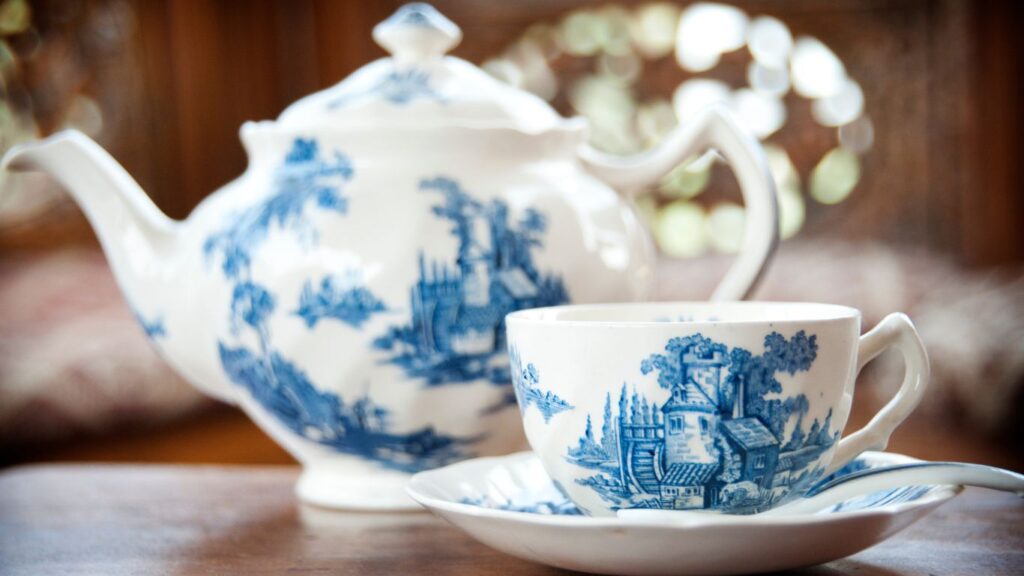
Pottery is a fantastic art form that has been around for ages. Knowing the three types of pottery can help us to appreciate it more. The three types are:
- Earthenware – This is one of the oldest types. It’s made with clay and fired at a lower temperature, making it fragile and porous.
- Stoneware – Stronger and denser than earthenware. It’s fired at a higher temperature for a long time. It’s non-porous and often used to make dishes or crockery.
- Porcelain – Considered the best type of pottery. Made from clay, it fired at very high temps, making it solid and non-porous. It’s also more expensive than the other two.
There are also subtypes, like majolica and terracotta, under earthenware.
Design elements, like slip trailing and sgraffito, give each piece unique characteristics. The surface gloss, texture, and translucency influence how light reflects off a pottery item.
When buying decorative pottery, look for the shape, size, colors, and ornamental purpose.
To get the most out of this craft, learn about famous potters and how different cultures have contributed. Besides, check out your grandma’s collection if you want to collect antique pieces!
What is the most famous decorative pottery?
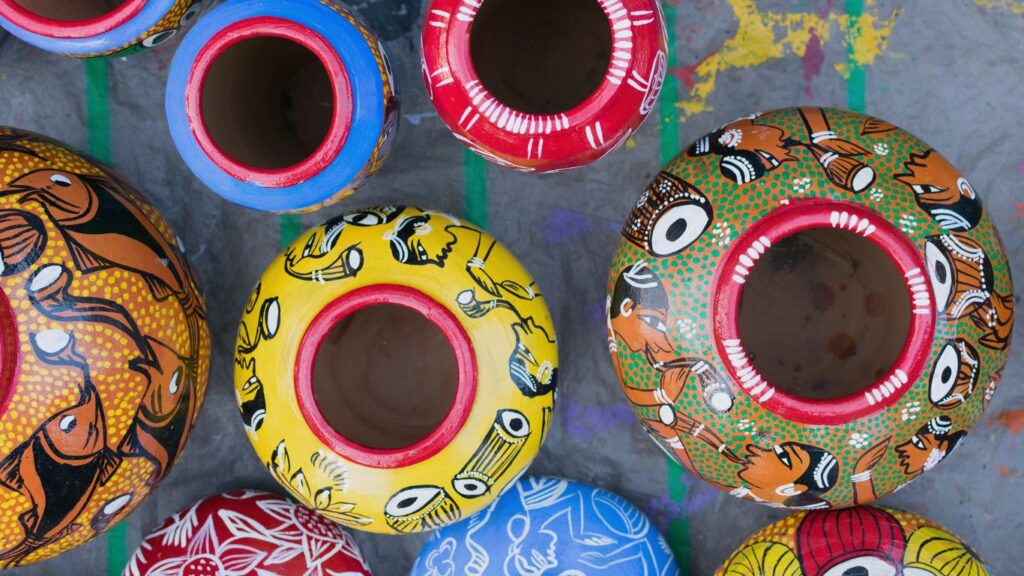
Pottery – is an art form with a long-standing history. It has evolved, with different types popular in various cultures. Such as earthenware, stoneware, porcelain, terracotta, and raku.
- Earthenware – rustic, fired at a lower temperature.
- Stoneware – durable, fired at higher temperatures, non-porous.
- Porcelain – smooth, translucent, fired at very high temperatures.
- Terracotta – clay with orange/red hue, fired without glaze, porous.
- Raku – originated in Japan, hot removal from the kiln creates unique crackling patterns.
Pottery has been used for many centuries for storage, cooking, religious artifacts, decorative pieces, etc. Ancient civilizations like Greece, Egypt, and China were the first to use pottery. It has gone on to be used as an expressive art form, with each culture adding its techniques and styles. Now, many amazing ceramic artists are pushing the limits of ceramics.
You could find a fortune in pottery – Picasso or pre-Columbian artifacts could make your bank account skyrocket.
What is the most collectible decorative pottery?
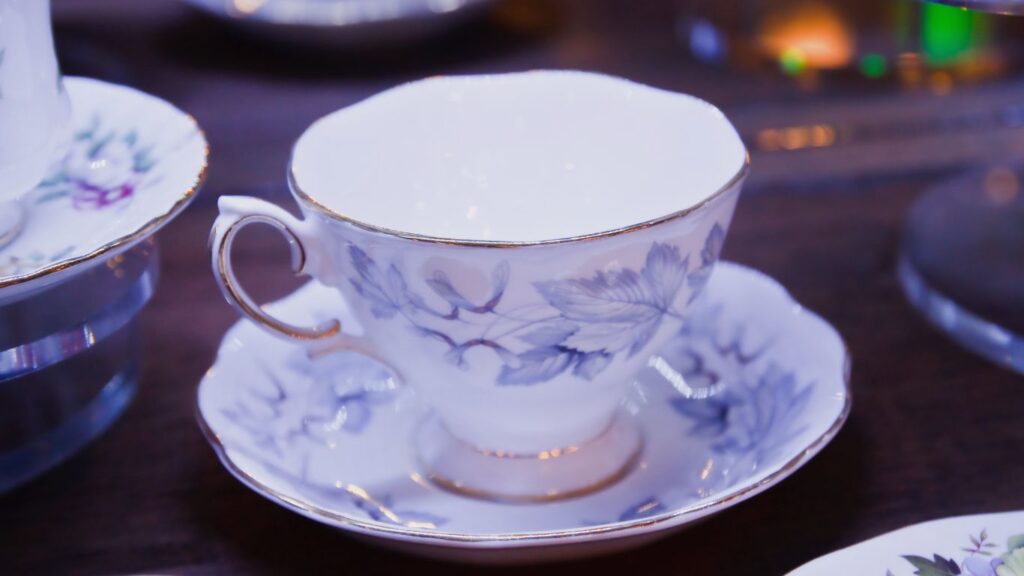
Pottery collectors know that certain types are more desirable and valuable. Experts have studied market trends and historical significance to decide which pottery is most sought after.
Below is a table of the most collectible pottery:
| Pottery Type | Origin | Characteristics |
|---|---|---|
| Majolica | Italy | Vibrant colors, intricate designs |
| Ming Dynasty Porcelain | China | Blue and white glaze, intricate patterns |
| Rookwood Pottery | USA | Art Nouveau designs, distinct shapes |
| Wedgwood Jasperware | England | White porcelain etched with blue or green designs |
Majolica from Italy is renowned for its vibrant hues and intricate designs. Ming Dynasty Porcelain from China is known for its blue and white glaze, and Rookwood Pottery from the US has unique shapes and Art Nouveau influences. Wedgwood Jasperware from England is famous for its white porcelain etched with blue or green designs.
Age, rarity, condition, and maker signature all affect the desirability of pottery pieces and their collector’s value. Attending auction events or browsing online marketplaces is recommended to build or increase a pottery collection. Also, store pieces away from direct sunlight and fluctuating temperature environments to ensure longevity.
What are the three types of ceramics?
Ceramics are sorted into separate groups based on properties and production techniques. These categories signify distinct ceramic types that serve different purposes.
- Earthenware is the earliest form of ceramics. It’s made of clay and fired at a low temperature, usually below 1,000 degrees Celsius. It is porous and part-opaque due to its unfinished state.
- Stoneware has a higher density because of the intense firing process, around 2,200 degrees Fahrenheit. Nonporousness is achieved by the use of fired materials, making it perfect for cooking tools.
- Porcelain is crafted with clay containing kaolin and glass-forming substances such as feldspar and quartz. It’s known for its translucency and is used in decorative pieces.
Earthenware is great for decorations and artful items. Stoneware’s strength makes it ideal for dishes and functional objects. Porcelain is more durable but not as versatile as stoneware.
Tip: Have you thought of buying a kiln? Your ceramics can be spruced up with paint or sparkles – they won’t be boring!
What are some ways to decorate ceramics?
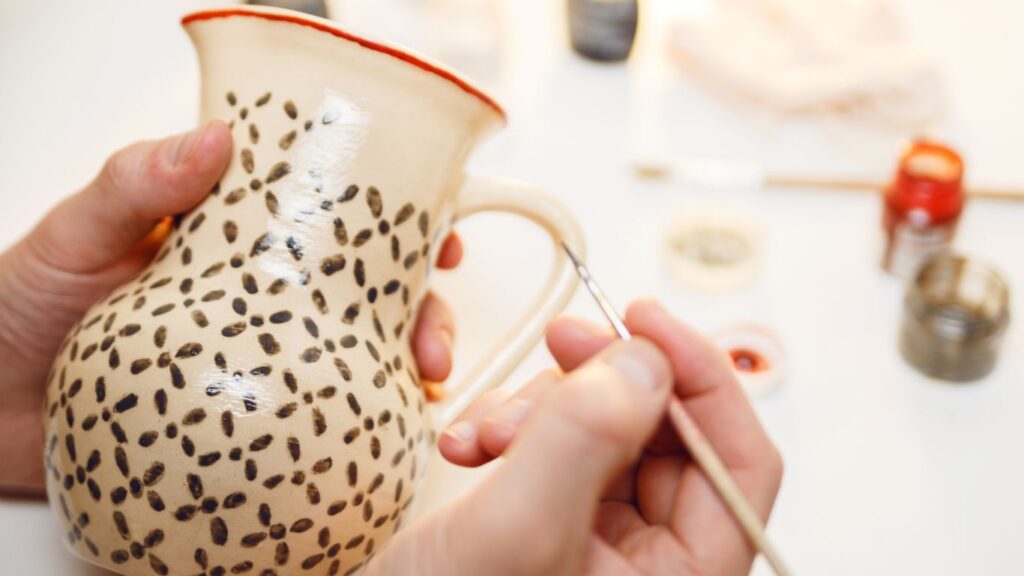
Ceramics and pottery are practically the same thing. To up the ante and add beauty and personality to any decorative piece, it’s essential to get creative! Here’s a five-step guide to decorating ceramics:
- Clean the ceramic surface with soap and water. Let it dry.
- Choose the appropriate technique – painting, glazing, etching, or carving.
- Grab the right tools – brushes, stencils, sponges… even fingers!
- Apply glaze for a smooth finish.
- Fire it up according to the manufacturer’s instructions.
Select colors that fit your concept. Or, get even more creative with mixed techniques, like combining textures and paintwork. You can also try new ideas, like mixing metallic pigment with glaze before decorating. With this guide, you’ll have uniquely adorned pottery just to your liking.
What is the difference between ceramics and pottery?
Ceramics and pottery may be alike, but they have their differences. To learn more, let’s look at their features in a table.
| Feature | Ceramics | Pottery |
|---|---|---|
| Materials | Made with clay and other materials, like glass and metal | Made just with natural clay |
| Firing Temperature | Fired at high temperatures | Low firing temperatures |
| Functionality | It can be decorative or functional | Usually just practical |
If you want to make ceramics or pottery, here are some tips:
- Practice your craft
- Explore different mediums
- Attend workshops
Then, you’ll be able to create unique ceramics or pottery!
Don’t settle for regular ceramics; try something new with pottery that’ll blow grandma away!
Comparing the Characteristics of Traditional versus Modern Ceramics
Traditionally, ceramics were made by hand with clay. Design and shape depended on the potter’s expertise and skill. But modern ceramics are made by machines, meaning they all have uniformity in size, shape, and color. Check out the differences below:
| Characteristic | Traditional Ceramics | Modern Ceramics |
|---|---|---|
| Method of production | Handmade | Mechanized |
| Materials used | Natural clay | Synthetic |
| Variations in Design | Individually crafted | Uniformity |
| Firing temperature | Low to high | High |
| Glaze application | Brushwork by hand | Automated |
In addition, traditional ceramics have been passed down for generations, but modern ceramics have precision and efficiency due to technology.
Tip: Knowing how it was made is essential when buying decorative pottery. This often affects quality and price. Remember, modern ceramic isn’t just clay – it’s a mix of chemicals and magic!
What is modern ceramic made of?
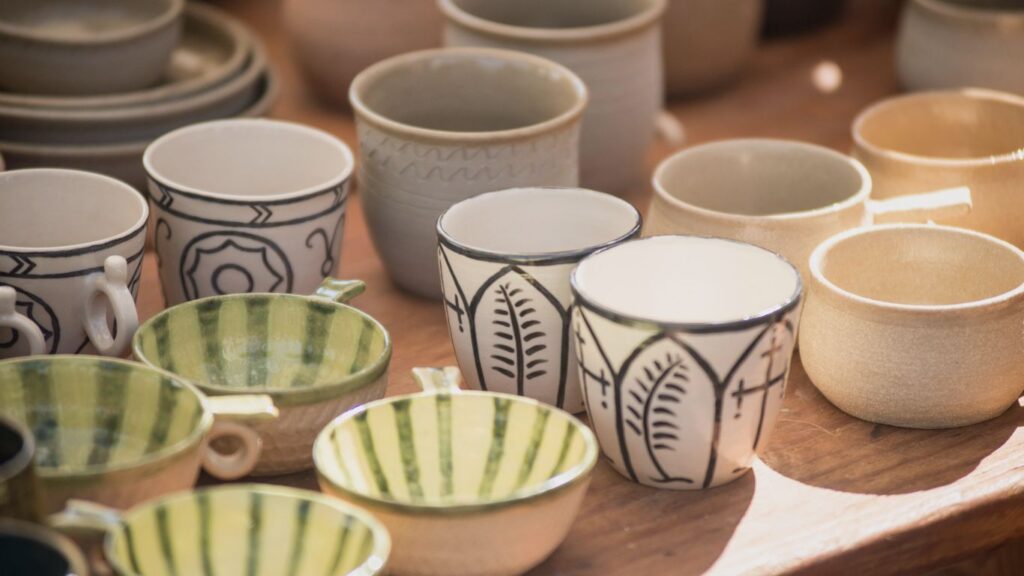
Ceramic compositions today are a mix of various raw materials – clay, feldspar, kaolin, and quartz. Different grades and properties affect the final product’s features. Modern ceramic-making techniques let us precisely control the mixing and firing processes. This gives us more versatility in designing ceramics with unique colors, textures, and strength variations.
Scientists are also creating advanced ceramics to handle extreme temperatures and pressure changes in different fields.
Unfired pottery? Just a clay fling – a relationship that never got serious.
What is pottery that has not been fired?
Greenware is unfired clay objects that have not gone through the process of hardening and permanence. It can be molded into any size or shape and is soft but strong enough to be fired without losing shape. If you want to decorate it, consider the weight and use ceramic glaze materials like stains and enamel. Hand painting with underglaze and using colored pencils are great techniques for decoration. Carving can also be used to add detail. Once dried, your creations will look crisp and lovely! Even if they don’t, your dead plants will look stylish in a ceramic planter.
Are ceramic planters suitable for the outside?
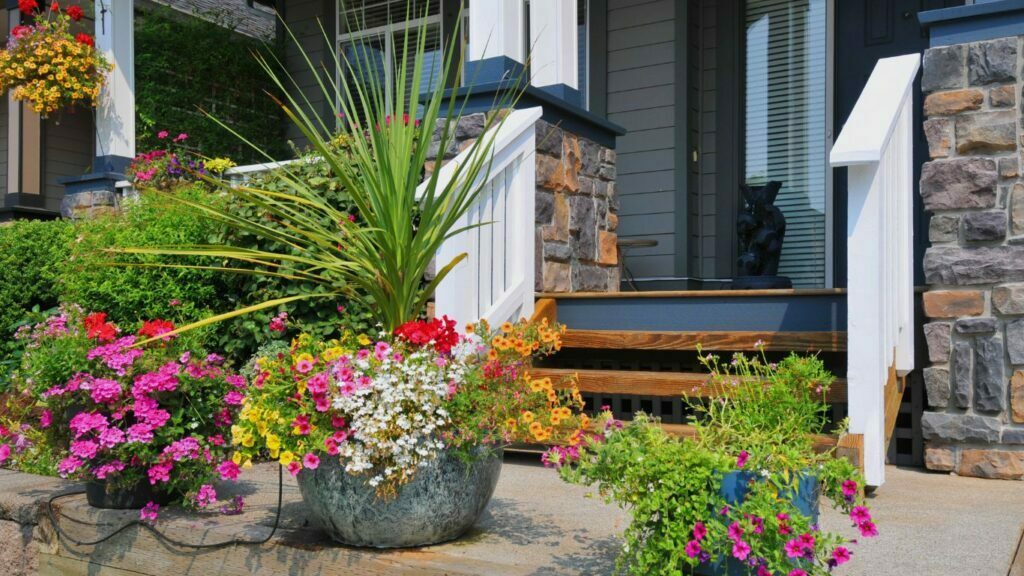
Ceramic planters are great for outdoor use! They are durable and can withstand harsh weather conditions. They come in various designs, adding beauty to your outdoor space.
Pros of using ceramic planters outdoors:
- Maintain soil moisture
- Provide insulation against extreme temperatures
- Aesthetically appealing design options
Cons of using ceramic planters outdoors:
- Fragile, prone to breakage
- Heavyweight, challenging to move around
- Porosity leads to faster evaporation of water
Research shows that glazed ceramic planters are less porous than unglazed ones, thus reducing the rate of water evaporation from the soil. Plants don’t care if their home is made of plastic or ceramic – they’re glad not to be on a grocery store shelf!
Do plants grow better in plastic or ceramic pots?
The type of pot can significantly influence plant growth. Plastic and ceramic pots come with their advantages and disadvantages. Let’s explore how they impact plant growth based on scientific evidence!
| Factors | Plastic pots | Ceramic pots |
|---|---|---|
| Moisture retention | Absorbs less moisture. Needs more frequent watering. | Better insulation from heat. Keeps soil cooler and roots healthy in scorching temperatures. Be careful when watering, as excess water may stay in the container. |
| Heat Retention | Holds heat, resulting in quicker soil drying and root overheating in hot weather. | Better insulation from heat. Keeps soil cooler and roots healthy in scorching temperatures. Be careful when watering, as excess water may stay in the container. |
| Cost efficiency and Durability | Cheaper than ceramic pots. Easily available. Durable, long-lasting. | Ceramic pots cost more but get better with age. More durable than plastic but can easily break or chip if mishandled. |
Ceramic pots are suitable for plants that thrive in moist soil and prefer lower temperatures but mustn’t be overwatered. On the other hand, plastic containers are better suited for plants that need drier soil, with frequent watering due to their lower absorption rate.
When deciding between plastic and ceramic, think about how it will look in your home. Ultimately, it should be a combination of scientific data and personal preference. Choose a pot that meets your plant’s needs while adding to the décor.
Provide suitable soil, fertilizer, watering schedule, and sunlight exposure for optimal growth. When potting plants with drainage holes, add broken pottery or stones to the bottom of the pots to improve water flow and prevent root rot. Finally, remember to give your plants enough space for air circulation and prune them regularly.
Why not just skip the house plants and go straight for decorative pottery? It’s like having a garden in your home without all the hassle of watering and maintenance.
What is the most popular house plant?

House plants are essential for interior decor. They bring a calming feel and pleasing aesthetics to our homes. The Ficus is the most popular of all. The Snake Plant, succulents, and Bird’s Nest Ferns follow. People increasingly use air-purifying house plants such as Spider Plant and Aloe Vera. Pilea peperomioides are popular due to their large leaves and low maintenance. Monstera Deliciosa is trendy and looks tropical.
If you want indoor greenery, these five are great starting points. There are many other species to choose from, depending on available light, temperature, humidity, and space.
Ancient Egyptians treasured houseplants for their symbolism. It’s been centuries since, yet people still love them for their air-purifying and coloring abilities.
More home decor ideas to explore
- How to Create a Cohesive Look with Neutral Home Decor
- 7 Rustic Farmhouse Decorations to Make Your Home Cozy
Frequently Asked Questions
1. What kind of pottery is considered decorative?
Decorative pottery can refer to any pottery crafted with an emphasis on its aesthetic appeal rather than functionality. This can include vases, figurines, plates, bowls, and more.
2. What materials are commonly used in decorative pottery?
Clay is the most common material used in pottery, but different types of clay can produce different results. Other materials may be used, including glazes, paints, and other decorative elements such as beads or stones.
3. How is decorative pottery made?
Decorative pottery is made by shaping the clay, firing it in a kiln, and then decorating it using paints or glazes. The exact process can vary depending on the type of pottery being made and the artist’s preferences.
4. Can decorative pottery be used for practical purposes?
While decorative pottery is primarily intended for aesthetic purposes, some pieces may also be functional. For example, a decorative vase can also hold flowers or other decorative items.
5. How should decorative pottery be cared for?
Decorative pottery should be handled with care to avoid chipping or breaking. It is also essential to avoid exposing it to extreme temperatures or moisture, as this can cause damage to the materials used in its construction.
6. Where can I buy decorative pottery?
Decorative pottery can be purchased at many specialty stores, online retailers, and craft fairs. It can also sometimes be found at flea markets or antique shops.
Conclusion
In this post, we have explored the fascinating world of decorative pottery and ceramics. We have learned about the different types of clay, pottery, and ceramics and how they are made and decorated. We have also discovered some of the world’s most popular and collectible pottery and ceramics and some of the best plants to pair them with.
We hope you have enjoyed reading this post and learned something new about this ancient and beautiful art form. If you have any questions or comments, please leave them below. Thank you for reading!

Comments are closed.